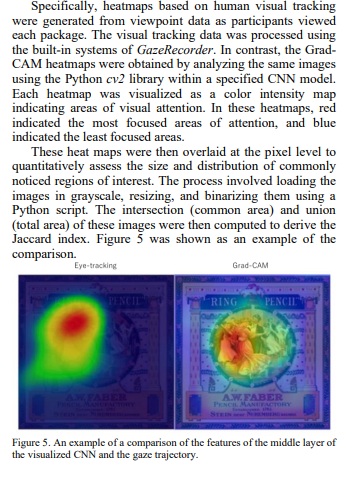Many brands traditionally rely on qualitative methods to design their product packaging, leaving uncertainties about the consistency of brand identity across different packages. This study leverages machine learning to quantitatively extract and analyze design elements that resonate with consumers’ perception of brand identity. Specifically, we employed Grad-CAM, an interpretative method for Convolutional Neural Networks (CNNs), to identify crucial visual features—termed Visual Identities—within the middle layers of a model trained on specific brand package images. These features were analyzed to determine their influence on package classification and their alignment with human perception of brand identity. Our findings demonstrate that the machine learning approach approximates human perception closely, providing a novel quantitative method to enhance and maintain brand identity. Additionally, we quantified the contribution of each identified Visual Identity to overall brand recognition, offering a more systematic approach to understanding and preserving a brand’s distinctiveness that has traditionally been handled qualitatively.
https://www.thinkmind.org/articles/iotai_2024_1_40_20015.pdf
The participants’ eye movements were recorded while gazing at the package images. To record the trajectory, a webcam (ELECOM UCAM-C750FBBK; resolution 1920 × 1080 px, frame rate 30 FPS, angle of view 66 degrees, 1/4- inch CMOS sensor), a monitor (I-O DATA KH240V-B; 23.8-inch wide, resolution 1920 × 1080 px resolution, ADS panel, brightness 250 cd/m2 , response time 5 ms), and GazeRecorder a line-of-sight measurement software. The experiment room brightness was kept constant at 500 lux. After gazing at each image, participants responded with a confidence level ranging from 0 % (definitely not a Brand A package) to 100 % (definitely a Brand A package) that they thought each image was a Brand A package.

This study used machine learning to quantify the impact of packaging design on BI. Specifically, CNN and GradCAM were used to explore the extent to which machine feature extraction is consistent with human BI recognition. The results show that machine learning models can effectively identify and highlight important design elements in brand recognition. It was confirmed that the CNN model can identify brands based on specific elements of the package design, such as hue and logo, but also on detailed representations, such as the edges in an illustration. This showed that machines can capture important elements of VI and use them to make classification decisions. Furthermore, visualization with Grad-CAM reveals that the areas that the model focuses on coincide with the areas that humans focus on when recognizing BI. This suggested that machine learning models may be able to mimic the human recognition process, indicating the existence of common ground between human and machine recognition. The study also provided a method for quantifying the impact of individual design elements on brand recognition. This would enable brand managers to understand the specific impact of each packaging design element on BI and make more strategic design decisions.